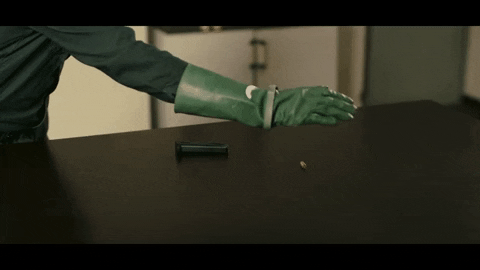
Tenet - Temporal Inversion Simulation
Matthew Anthony Barr / December 15, 2024
Unlock time travel with this Python-based simulation! 🕰⏳🪐💫 Imagine capturing a moment on video and then watching it unfold in reverse, as if you’re peering into a world where time flows backward. Inspired by the concepts of Christopher Nolan’s "Tenet," this project helps you to explore the magic of temporal inversion in a way that's both playful and profound.
Features
- Temporal Inversion: Transform your footage into mind-bending reversed sequences, just like in Tenet.⌚
- Live Action Capture: Watch your recording unfold with a sleek status display that keeps you in the loop.📸
- Smart Storage: Your temporal experiments are automatically organised with precise timestamps.
- Bulletproof Design: Robust error handling keeps your project running smooth and crash-free.
🛠️ Technologies
- Python: The programming language driving this project's temporal magic.
- OpenCV: Captures video from the camera and manipulates our video streams.
- NumPy: Provides support for handling mathematical operations on video frames.
Getting Started
To get started with this project, you can clone the repository and install the dependencies:
pip install opencv-python numpyAlternatively, if you are starting from scratch and using macOS, you can install Python and its dependencies through Homebrew:
brew install python3The Code:
Lets jump into our Tenet turnstile! Our streamlined code lets you instantly time-travel, without the lengthy tutorials. Just install, run and watch as your computer becomes a time machine. The code below includes descriptions and explanations for each component and function, making it easy to understand.
If you've got questions or need a hand with your temporal simualator, hit the contact button up top!
// Import required Libraries
import cv2
import numpy as np
import time
from datetime import datetime
import os
class TenetRecorder:
def __init__(self):
self.cap = cv2.VideoCapture(0)
if not self.cap.isOpened():
raise Exception("Could not open camera")
self.frames = []
self.output_dir = "tenet_recordings"
if not os.path.exists(self.output_dir):
os.makedirs(self.output_dir)
def record_original(self, duration=10):
"""Record original footage"""
start_time = time.time()
print("Recording original footage...")
while time.time() - start_time < duration:
ret, frame = self.cap.read()
if ret:
self.frames.append(frame.copy())
// Add recording indicator
cv2.circle(frame, (30, 30), 10, (0, 0, 255), -1)
cv2.putText(frame, "RECORDING", (50, 40),
cv2.FONT_HERSHEY_SIMPLEX, 1, (0, 0, 255), 2)
cv2.imshow('Tenet Recording', frame)
if cv2.waitKey(1) & 0xFF == ord('q'):
break
cv2.destroyWindow('Tenet Recording')
def create_inverted_sequence(self):
"""Create and save both normal and inverted sequences"""
timestamp = datetime.now().strftime('%Y%m%d_%H%M%S')
// Set up video writers
fourcc = cv2.VideoWriter_fourcc(*'XVID')
frame_size = (int(self.cap.get(3)), int(self.cap.get(4)))
fps = 30
// Original sequence
original_file = os.path.join(self.output_dir, f'original_{timestamp}.avi')
original_writer = cv2.VideoWriter(original_file, fourcc, fps, frame_size)
// Inverted sequence
inverted_file = os.path.join(self.output_dir, f'inverted_{timestamp}.avi')
inverted_writer = cv2.VideoWriter(inverted_file, fourcc, fps, frame_size)
// Save original sequence
print("Saving original sequence...")
for frame in self.frames:
original_writer.write(frame)
// Create and save inverted sequence
print("Creating and saving inverted sequence...")
for frame in reversed(self.frames):
inverted_writer.write(frame)
cv2.imshow('Inverted Playback', frame)
cv2.waitKey(33) # ~30fps playback
// Clean up
original_writer.release()
inverted_writer.release()
cv2.destroyAllWindows()
return original_file, inverted_file
def run_full_sequence(self):
"""Run the complete recording and inversion process"""
try:
// Step 1: Record original footage
self.record_original()
if len(self.frames) == 0:
print("No frames were recorded!")
return
// Step 2: Create and save sequences
original_file, inverted_file = self.create_inverted_sequence()
print(f"\nRecording complete!")
print(f"Original footage saved as: {original_file}")
print(f"Inverted footage saved as: {inverted_file}")
except Exception as e:
print(f"An error occurred: {str(e)}")
finally:
self.cap.release()
cv2.destroyAllWindows()
def __del__(self):
"""Cleanup when object is destroyed"""
if self.cap.isOpened():
self.cap.release()
if __name__ == "__main__":
print("Tenet-Style Temporal Inversion Recorder")
print("--------------------------------------")
print("Press 'Q' to stop recording early")
print("Starting in 3 seconds...")
time.sleep(3)
recorder = TenetRecorder()
recorder.run_full_sequence()
Conclusion
And so, like the film that inspired it, our Tenet time-travel simulator stands as a testament to the fascinating interplay between time, technology, and human ingenuity. Whether you're a film enthusiast, a Python developer, Physicist or simply someone intrigued by the concept of temporal inversion, This project offers a unique window into the possibilities that emerge when we dare to think differently about time itself. Remember: What's happened, happened. But with this recorder, you can always watch it happen again - backwards.